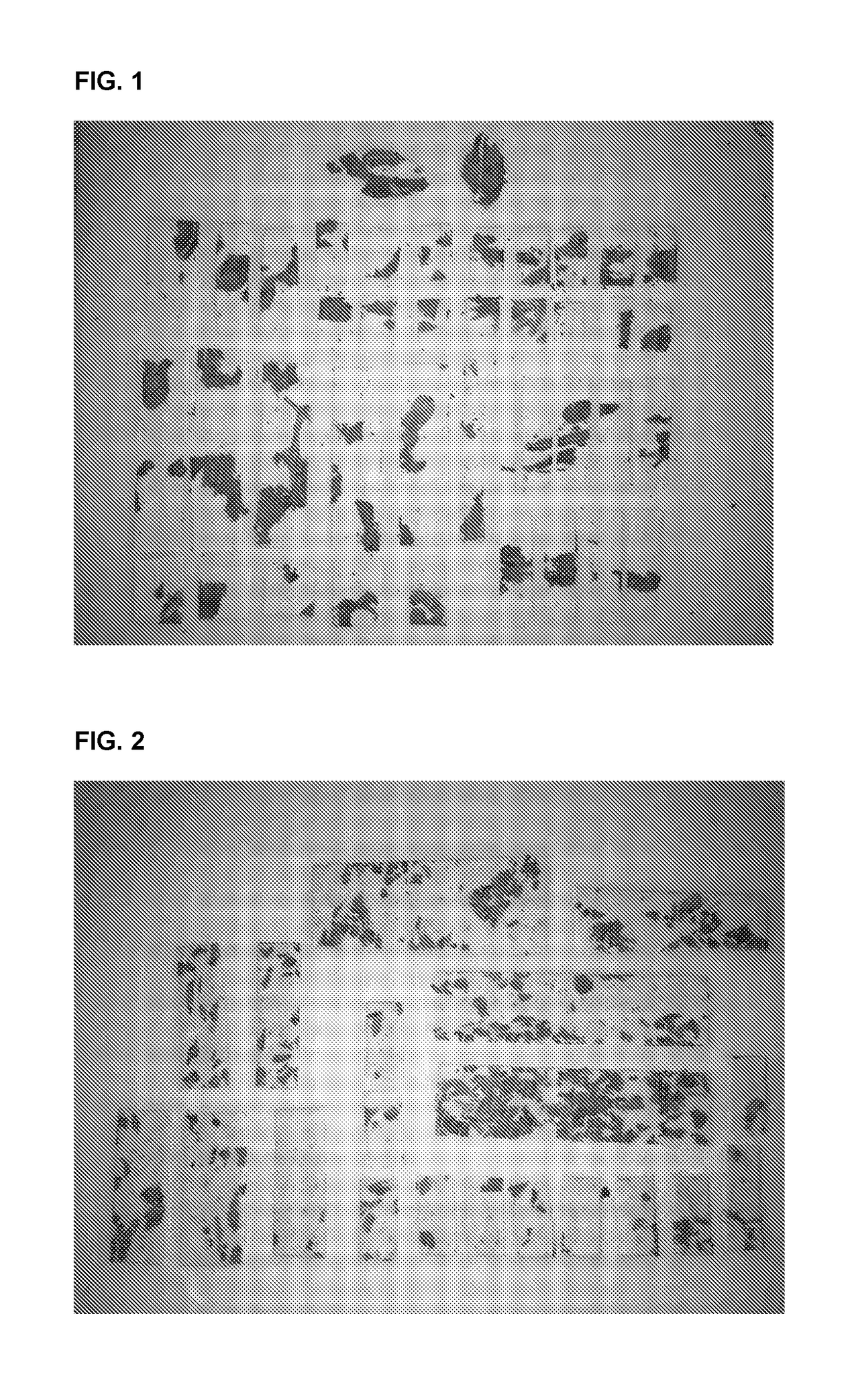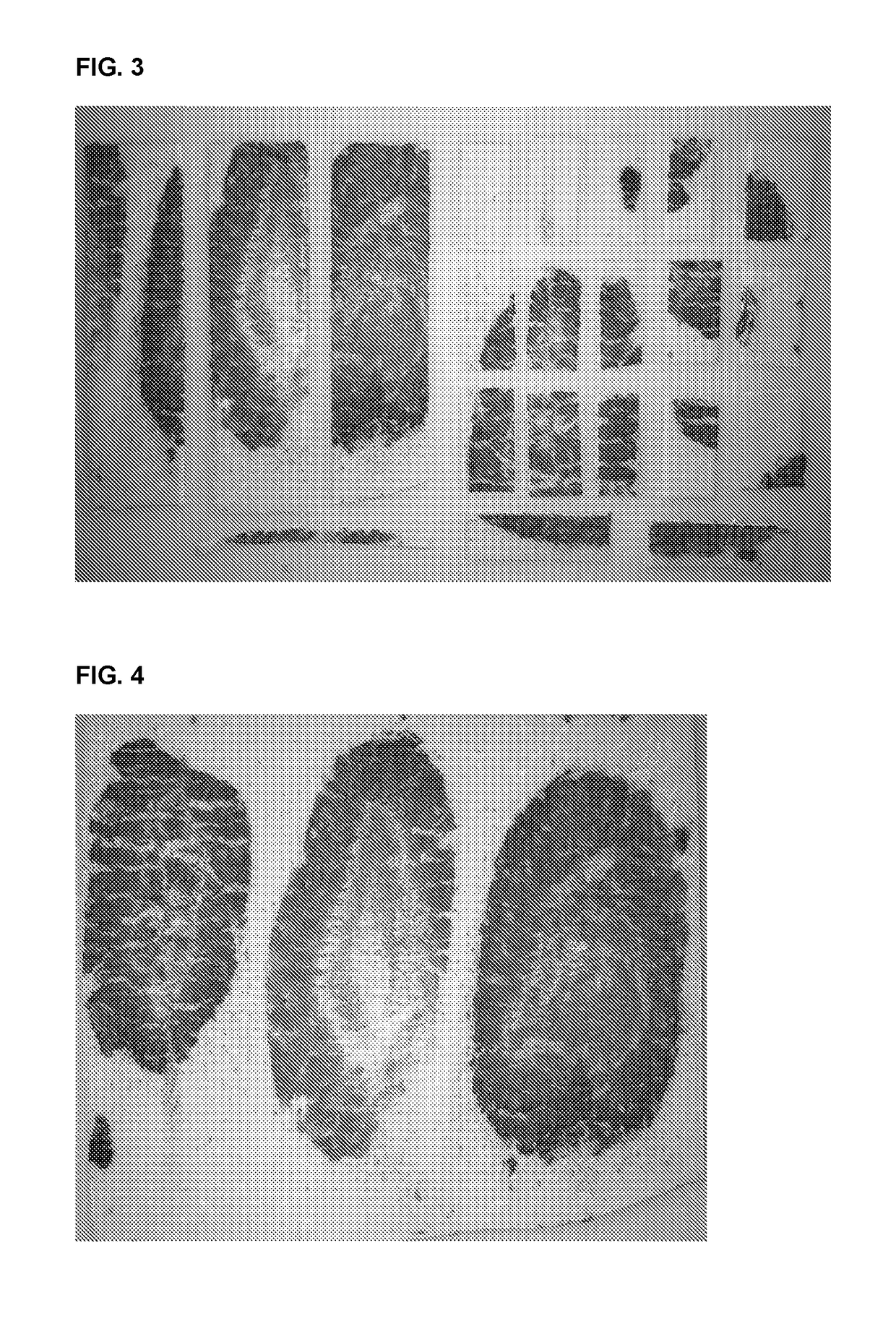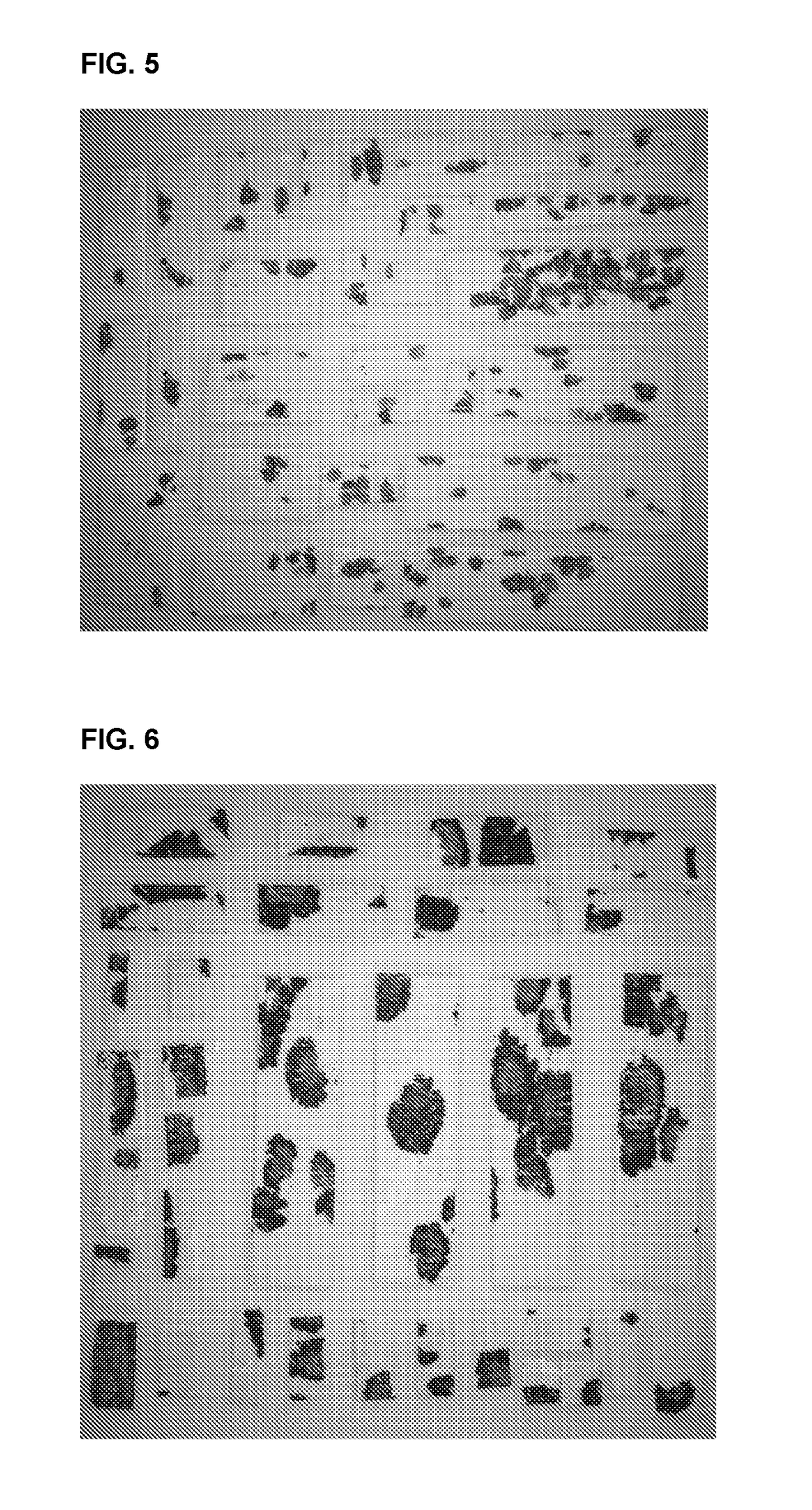Chewing gums and pressed mints having surface features
- Summary
- Abstract
- Description
- Claims
- Application Information
AI Technical Summary
Benefits of technology
Problems solved by technology
Method used
Image
Examples
example 1
[0046]A chewing gum was prepared in a laboratory scale Z-blade mixer according to the formula of Example 1 (Table 1). A rolling station was used to hand-roll the gum composition into a flat slab about 3 mm in thickness.
example 2
[0047]Dry mint leaves were made using a freeze-drying process. In this freeze-drying process, fresh mint leaves were picked from supermarket, washed, then laid flat as single layer in each tray and frozen at −25° C. overnight. Frozen leaves were then transferred to a commercial freezer Labconco™ for vacuum drying under 0° C. until 90% or above moisture was removed. These were applied evenly to the surface of the gum slab from Example 1. During this process, rolling compound was not used in order to improve attachment between plant material and the gum surface. The stainless roller was used to press the mint leaves into the surface of the gum sheet and to size down the sheet to about 0.9 mm. This required approximately 6-7 passes with the roller. The finished gum sheet was about 0.9 mm thickness that had mint leaves compressed on to one side surface. (FIG. 1)
example 3
[0048]The process of Example 2 was repeated except that commercially dried mint leaves were used. The product is shown in FIG. 2.
PUM
 Login to View More
Login to View More Abstract
Description
Claims
Application Information
 Login to View More
Login to View More - R&D
- Intellectual Property
- Life Sciences
- Materials
- Tech Scout
- Unparalleled Data Quality
- Higher Quality Content
- 60% Fewer Hallucinations
Browse by: Latest US Patents, China's latest patents, Technical Efficacy Thesaurus, Application Domain, Technology Topic, Popular Technical Reports.
© 2025 PatSnap. All rights reserved.Legal|Privacy policy|Modern Slavery Act Transparency Statement|Sitemap|About US| Contact US: help@patsnap.com



